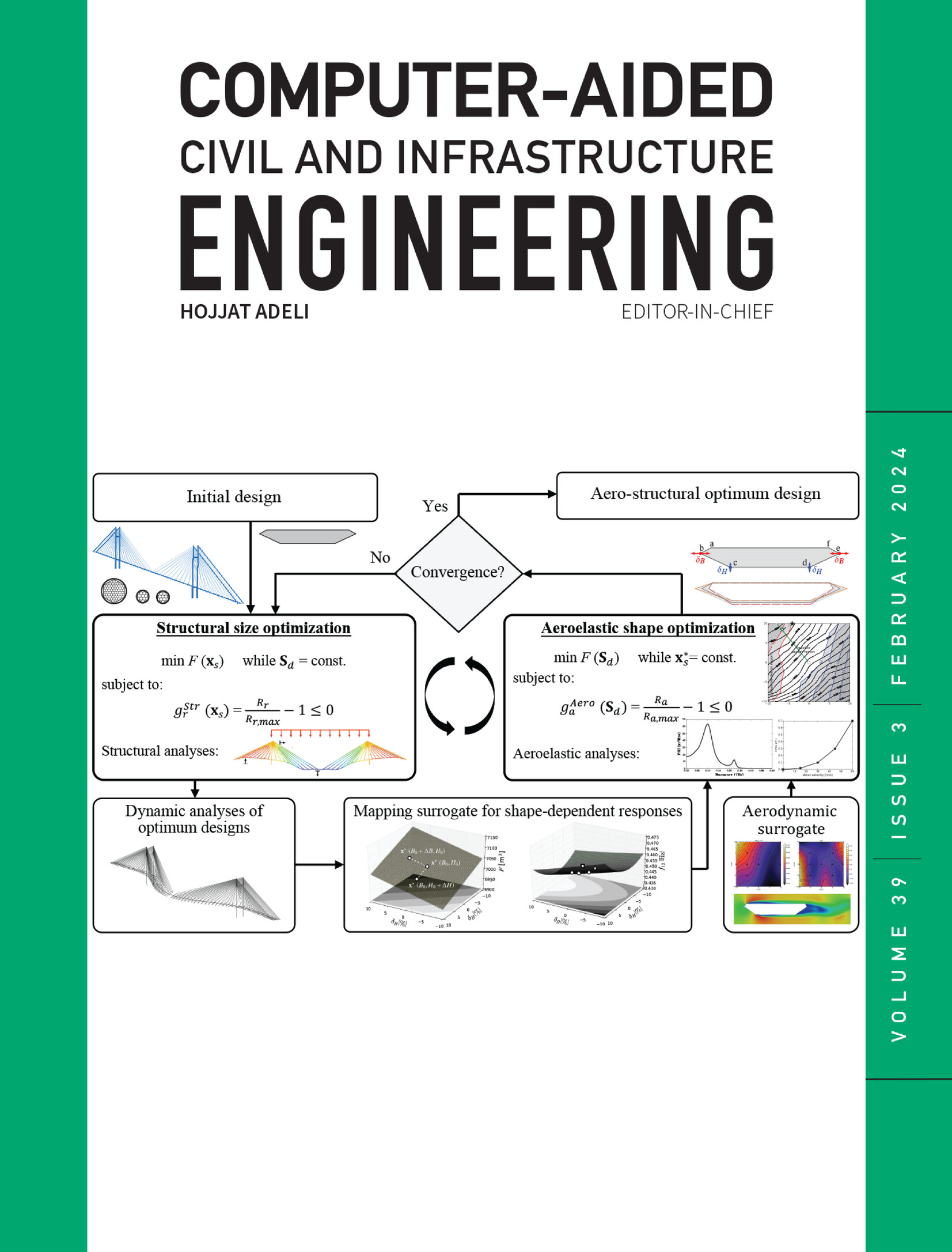Early detection and location of unexpected events in buried pipelines under unseen conditions using the two‐stream global fusion classifier model
IF 8.5
1区 工程技术
Q1 COMPUTER SCIENCE, INTERDISCIPLINARY APPLICATIONS
引用次数: 0
Abstract
Failure of buried pipelines can result in serious impacts, such as explosions, environmental contamination, and economic losses. Early detection and location of unexpected events is crucial to prevent such events. However, conventional monitoring methods exhibit limited generalization performance under varying environmental and operational conditions. Furthermore, the cross‐correlation‐based time difference of arrival approach, which is widely used for source localization, also lacks the capability to identify anomalous events. This study introduces what is termed as the two‐stream global fusion classifier (TSGFC), a novel multitask deep‐learning model designed to early detection and location of unexpected events in buried pipelines, even under previously unseen conditions. TSGFC combines spatial and temporal features from accelerometer data using a global fusion mechanism, and uniquely performs both event classification and source localization through a unified multitask framework. To ensure generalization across diverse environments, we employed a unique data acquisition strategy that was specifically designed to evaluate the model's performance under domain shift by using training data from controlled experiments and test data from real‐world excavation activities conducted on a completely different pipeline. Our results confirm that TSGFC can identify unexpected excavation activity with 95.45% accuracy and minimal false alarms, even when evaluated on data collected from a completely different buried pipeline under real‐world excavation scenarios unseen during training.利用两流全局融合分类器模型在未知条件下对埋地管道中的意外事件进行早期检测和定位
埋地管道发生故障会造成爆炸、环境污染和经济损失等严重影响。早期发现和定位意外事件对于预防此类事件至关重要。然而,传统的监测方法在不同的环境和操作条件下表现出有限的泛化性能。此外,广泛用于源定位的基于互相关的到达时差方法也缺乏识别异常事件的能力。本研究介绍了所谓的两流全局融合分类器(TSGFC),这是一种新型的多任务深度学习模型,旨在早期检测和定位埋地管道中的意外事件,即使在以前看不见的情况下也是如此。TSGFC采用全局融合机制,结合加速度计数据的时空特征,通过统一的多任务框架,独特地完成事件分类和源定位。为了确保在不同环境下的泛化,我们采用了一种独特的数据采集策略,该策略是专门设计的,通过使用来自控制实验的训练数据和来自完全不同管道上进行的真实世界挖掘活动的测试数据来评估模型在域转移下的性能。我们的研究结果证实,TSGFC识别意外挖掘活动的准确率为95.45%,虚报率最低,即使是在训练期间未见过的真实挖掘场景下从完全不同的埋地管道收集的数据进行评估时也是如此。
本文章由计算机程序翻译,如有差异,请以英文原文为准。
求助全文
约1分钟内获得全文
求助全文
来源期刊
CiteScore
17.60
自引率
19.80%
发文量
146
审稿时长
1 months
期刊介绍:
Computer-Aided Civil and Infrastructure Engineering stands as a scholarly, peer-reviewed archival journal, serving as a vital link between advancements in computer technology and civil and infrastructure engineering. The journal serves as a distinctive platform for the publication of original articles, spotlighting novel computational techniques and inventive applications of computers. Specifically, it concentrates on recent progress in computer and information technologies, fostering the development and application of emerging computing paradigms.
Encompassing a broad scope, the journal addresses bridge, construction, environmental, highway, geotechnical, structural, transportation, and water resources engineering. It extends its reach to the management of infrastructure systems, covering domains such as highways, bridges, pavements, airports, and utilities. The journal delves into areas like artificial intelligence, cognitive modeling, concurrent engineering, database management, distributed computing, evolutionary computing, fuzzy logic, genetic algorithms, geometric modeling, internet-based technologies, knowledge discovery and engineering, machine learning, mobile computing, multimedia technologies, networking, neural network computing, optimization and search, parallel processing, robotics, smart structures, software engineering, virtual reality, and visualization techniques.

 求助内容:
求助内容: 应助结果提醒方式:
应助结果提醒方式:


